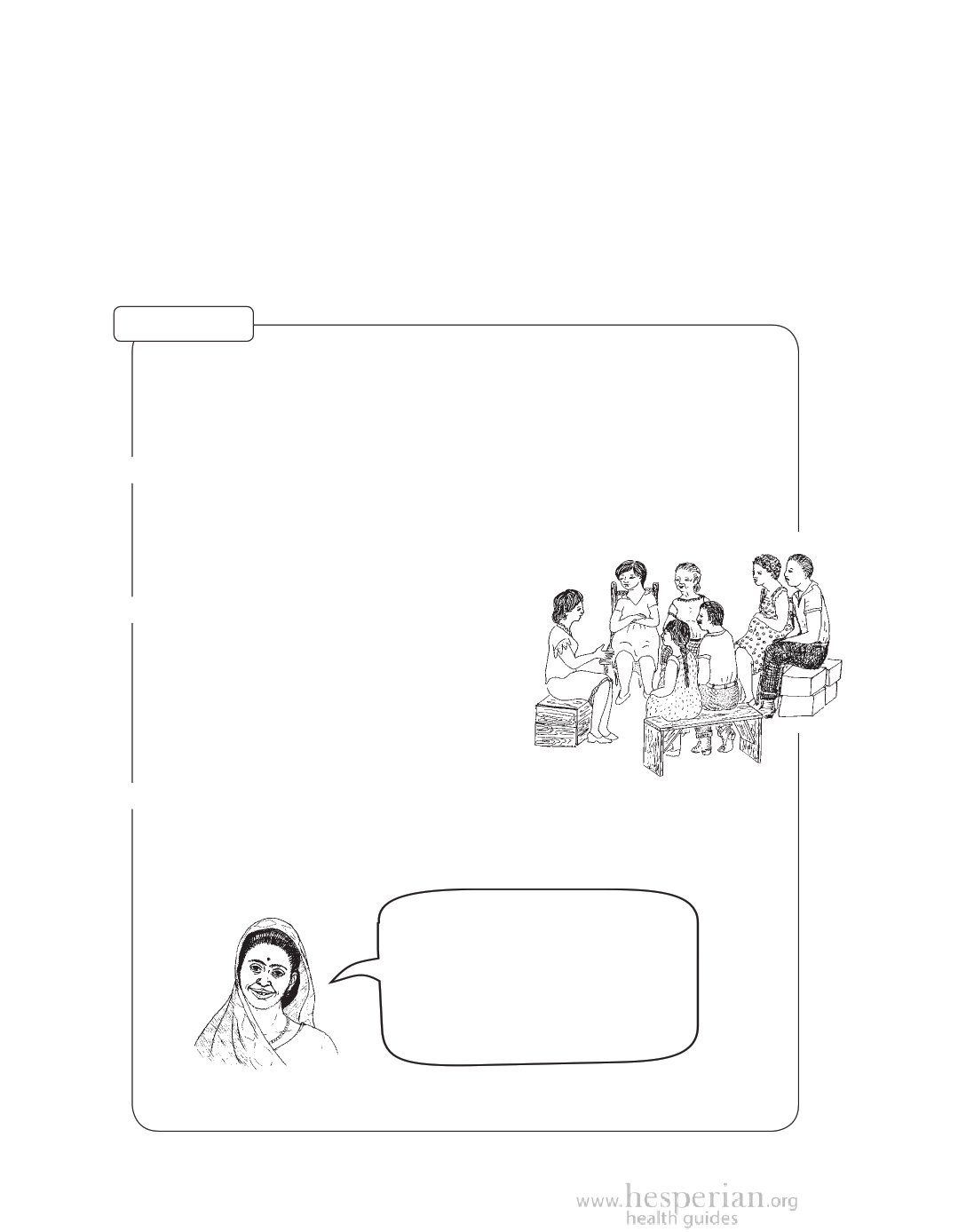
186 Forests
Forest Conflicts
Because forest resources are limited, conflicts often arise among people who
need to use the forest resources in different ways. Conflicts also arise between
local communities that depend on the forest and industries from outside the
community that want the resources the forest can provide.
Sociodramas
A sociodrama is a way to use theater to help think about conflicts and the causes
of those conflicts. Sociodramas can also help people explore possibilities for action
and change. (See page 17 for more about sociodramas and role plays; also see the
Hesperian book, Helping Health Workers Learn.)
➊ Divide into groups of about 5 people each and give each group a short description
of a situation that might lead to conflict over forest resources. Make up situations that
are believable to people, but avoid local situations that might shame or anger the
people involved in them. The plays will be more realistic if the participants
use a few simple costumes and props to show the parts
they are playing.
➋ Ask each group to spend 15 to 20 minutes to
prepare a 5 minute sociodrama. Encourage
everyone to play a part. Each group presents
their play for the other participants. After
each sociodrama is over, a discussion about
community conflicts can lead to solutions. Or
you can wait until all groups have presented and
discuss them all together.
➌ How did you feel? After presenting the sociodramas and before the discussion
(see page 189), ask each participant how it felt to play their part. Ask the people who
watched how they felt during each sociodrama, and how the actors made them feel
about the conflict.
A facilitator should be aware
of conflicts in the community and
be sensitive to the ways different
community members may react to
the discussion. During sociodramas,
be careful to create a safe and
open environment where people are
not afraid to speak.
A Community Guide to Environmental Health 2012